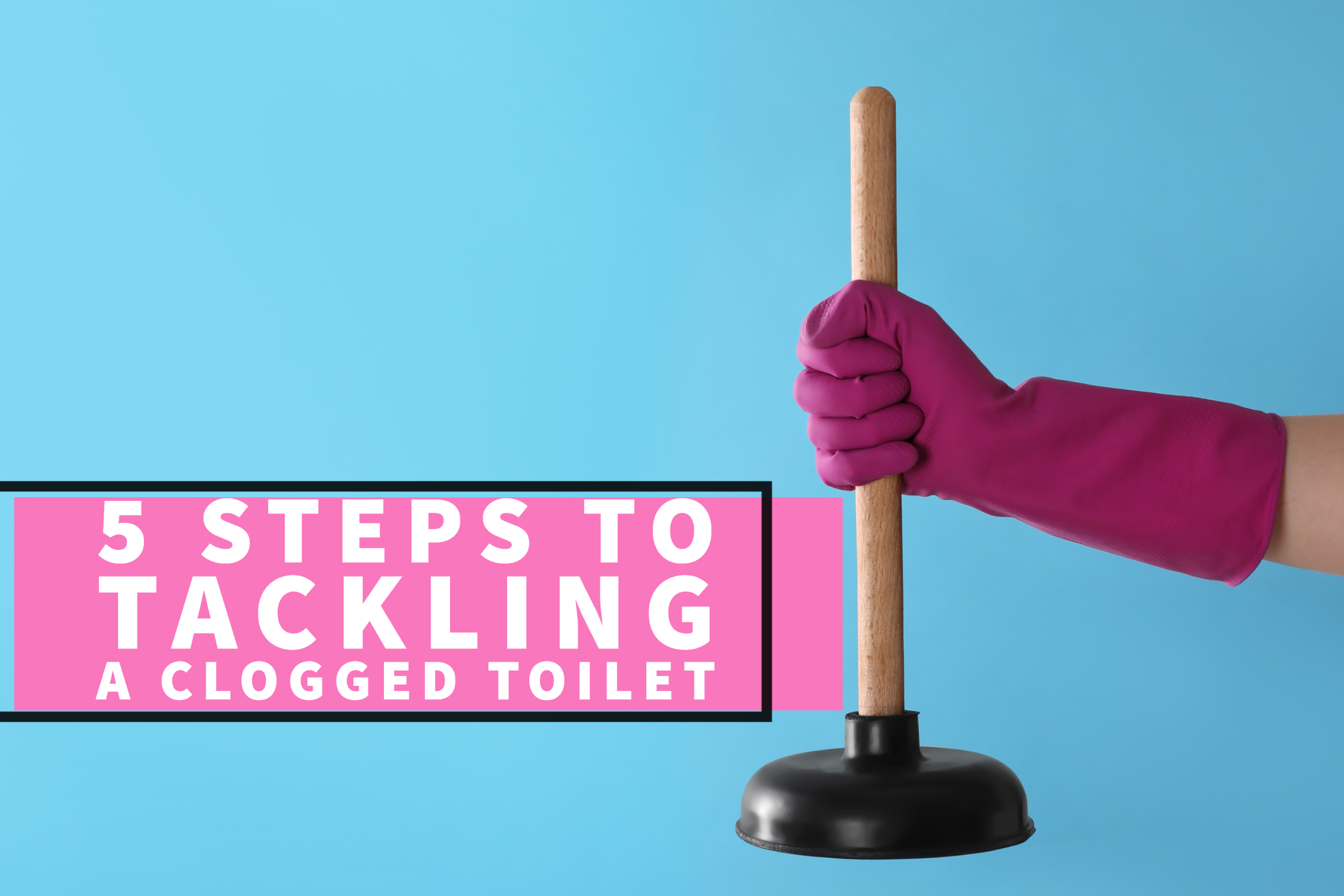Have you ever experienced a situation where after using the bathroom, you flush, and the water level in the toilet bowl keeps rising, seemingly out of control? This is never a fun situation to be in! So, what can you do to minimize the aftermath? Well, to be honest, if toilet water is destined to be strewn about your floor, there’s not much you can do to completely stop it. In that case, all you can do is deal with everything afterward. So, should you find yourself in this scenario, follow these steps provided by your Middletown Plumbing & Drain professionals.
1. Look for the Water Shut Off Valve & Turn It Off:
Typically, there is a water shut-off valve located behind your toilet. In the chaos of the moment, the best thing to do is to turn off the water supply first of all so that water does not continue to flow out of your toilet bowl. Look for the football-shaped knob and turn it clockwise to turn it off. But keep in mind, in the meantime, you should not flush the toilet again. Since there is a clog preventing the toilet from draining properly, it will only result in a larger mess if the toilet is flushed before the issue is fully resolved.
2. Look for the Rubber Flapper & Make Sure It’s Closed:
After turning off the water supply to the toilet, locate the rubber circle in the back of the tank. This rubber piece functions as a seal to prevent water from flowing into the toilet unless the flush lever is pulled. It should be attached to a metal lever or chain connected to the flush handle. You can push the rubber seal downward gently to ensure a tight seal.
3. Look for the Float Cup & Tie It Down:
To regulate the water level inside the toilet tank, find the float cup (or float ball) within the tank. Immobilizing the float to prevent it from moving will act as an extra means of ensuring water will not be an issue while you try to get ahold of the current situation.
4. Take Care of the Excess Water:
Congratulations on successfully stopping the flow of water! However, the task is not yet completed. It’s time to start cleaning up! Begin by emptying the excess water from the toilet bowl, as you wouldn’t want it to overflow once it is functional again. Since the toilet is presently not draining, you will have to do it yourself.
If there is any waste or debris in the water, please be cautious when cleaning it up. Your safety and hygiene should be your top priorities. We recommend wearing gloves if available. To start, remove any solids or waste and put them in a trash bag carefully. Use a bucket or container to scoop out the water from the bowl and empty it into the bathtub or sink. Take your time while doing this, exercising precaution. And remember – there should be no solid waste or debris present in the water as you don’t want to also cause issues for your sink or tub.
Another thing to consider is the potential damage to your floors caused by the water overflow. If you have a wet vacuum, you should use it to clean up the excess water. If your floors are solid, you can use towels, rags, a mop, or paper towels to clean up the spill. However, if the spill has unfortunately reached the carpeted space, it is best to lay towels flat over the wet area and place a heavy object on top of them to soak up the water. Just be sure that you allow the towels ample time to soak up the water. After the water has been soaked up, you can clean the carpet and solid floors accordingly. Don’t forget to also disinfect the bathroom and any other areas that came into contact with the toilet water.
5. Take Care of the Clog:
Last but not least, after you finish cleaning, use a plunger to clear the clog in the toilet drain. Ensure the plunger is submerged in water and then use it to remove the obstruction. This should neutralize the clog and clear the bowl once again. However, if the toilet still does not drain, there may be a bigger plumbing issue at play. This means now would be the best time to contact the professionals. In the case your toilet is once again working as intended, don’t forget to readjust and return everything back to its original spot, including the tank cover and turning the water valve back on.
If you have attempted to clear the blockage multiple times without success, please reach out to us for assistance. Call Middletown Plumbing & Drain today at (937) 298-9979 or schedule an appointment online now by clicking here! We’d be more than happy to help!

